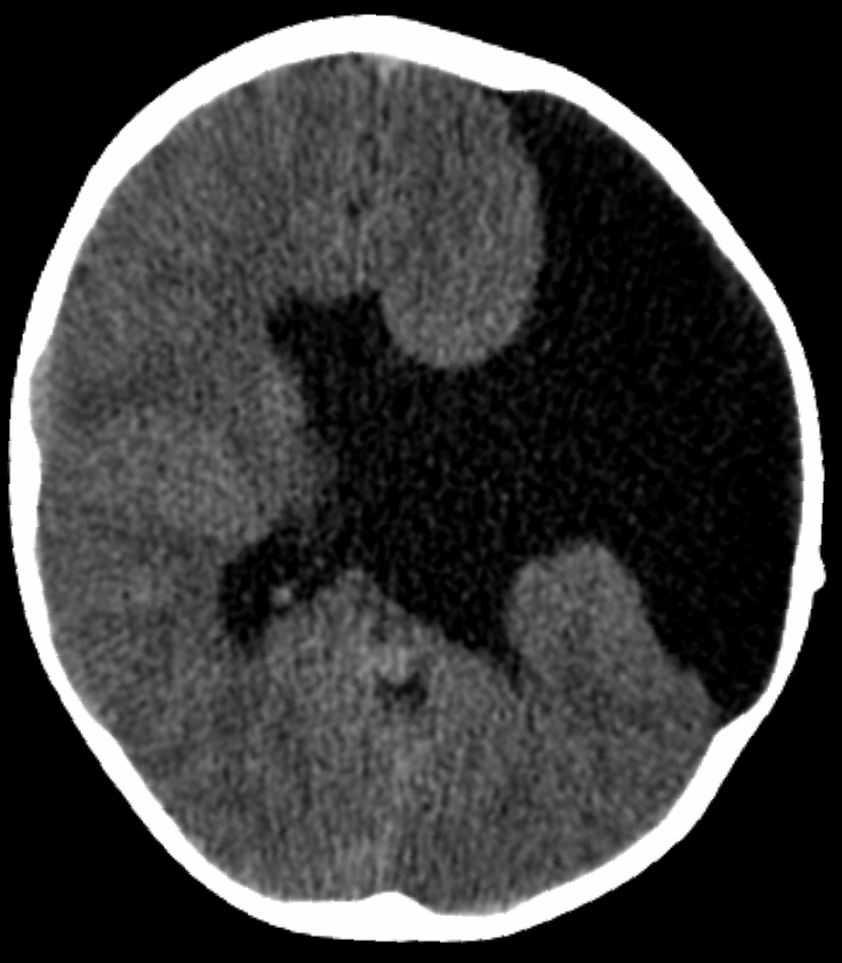Schizencephaly

A rare developmental defect during embryogenesis characterized by the presence of linear clefts containing cerebrospinal fluid lined by abnormal grey matter that extend from the lateral ventricles to the pial surface of the cortex. Schizencephaly can involve one or both cerebral hemispheres and may lead to a variety of neurological symptoms such as epilepsy, motor deficits, and psychomotor retardation.
Epidemiology
The birth prevalence is estimated at 1/64,935 in the USA and 1/69,444 in the UK.
Clinical description
Patients have varying clinical features including epilepsy (50-60% of cases), motor impairment, microcephaly and cognitive and learning disability. The severity of the clinical manifestations depends upon the extent of clefting and on whether other cerebral malformations are present. When a cleft affects one hemisphere alone (unilateral clefts), patients can have a hemiparesis but they may have little or no intellectual disability. Patients with bilateral clefts have a more severe phenotype that may be characterized by severe developmental impairment with spastic quadriplegia and severe intellectual disability. Schizencephaly is often associated with septo-optic dysplasia
Etiology
The disorder usually results from an acquired defect of the cerebral mantle and often becomes apparent only in the second half of pregnancy. Schizencephaly has been linked to a young maternal age and to conditions secondary to vascular disruption such as maternal drug administration (e.g. warfarin), amniocentesis, and infections (cytomegalovirus). Mutations in the COL4A1 gene encoding the major type IV alpha collagen chain of basement membranes have been found responsible of some schizencephaly cases. Other genetic factors have been suggested to play a role in its pathogenesis, such as EMX2, SHH, and SIX3 that could act as susceptibility factors.
Diagnostic methods
Postnatally, the diagnosis is made by computed tomography (CT) and/or magnetic resonance imaging (MRI) showing unilateral or bilateral clefting of the brain. There are different classification systems for schizencephaly but a frequently used one refers to clefts as either closed-lip (type I) when the tissue surrounding the clefts are closely opposed, and open-lip (type II) when the tissue is widely separated by cerebrospinal fluid. Cerebral malformations found in association with schizencephaly on neuroimaging studies include optic nerve hypoplasia, enlarged cerebral ventricles, absence of corpus callosum or septum pellucidum, cerebellar hypoplasia, or calcifications. Genetic testing will confirm mutations in the genes associated with susceptibility to the condition but these are rare.
Differential diagnosis
Differential diagnosis includes porencephaly.
Antenatal diagnosis
Prenatal diagnosis can made after 20 weeks of pregnancy by ultrasound examination or on in utero MRI, which demonstrates clefting and abnormalities of the cerebral mantle. The diagnosis may be confirmed post-natally by MRI, which may give additional information about the presence of septo-optic dysplasia and other abnormalities.
Genetic counseling
Most cases are sporadic but some familial cases have also been observed with inheritance reported to be either autosomal recessive or autosomal dominant with variable penetrance. Genetic counseling should be proposed to at risk couples informing them that there is either 25% risk of transmitting the disease to offspring in the case of an autosomal recessive inheritance or 50% risk for an autosomal dominant inheritance.
Management and treatment
Treatment consists on administration of anti-epileptic drugs in order to prevent seizures. In drug resistant cases (1/3rd of cases), surgery (e.g. resection of either the schizencephalic cleft alone or the cleft and surrounding epileptogenic tissue, temporal or frontotemporal lobectomy) can be performed. A regular neurologic evaluation is necessary. Physical and occupational therapy are essential.
Prognosis
The prognosis is variable and depends on the degree of clefting and the association with other cerebral malformations. Individuals with schizencephaly can have features of a hemiparesis only but the clinical picture can extend to profound neurological impairment with spastic quadriplegia leading to immobility and to severe learning disability and epilepsy.